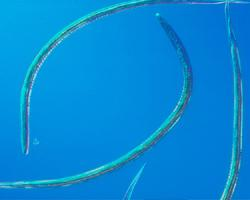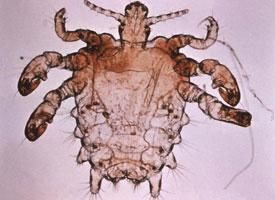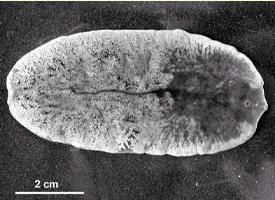
Stav ohrožení
| Neohrožen |
Popis zvířete
The Medium Stomach Worm, scientifically known as Ostertagia ostertagi, is a parasitic nematode that primarily affects cattle, though it can also infest other ruminants such as sheep and goats. This parasite is of significant concern in the agricultural sector due to its impact on livestock health and productivity. Ostertagia ostertagi belongs to the family Trichostrongylidae, a group of helminths commonly referred to as roundworms.Adults of Ostertagia ostertagi are slender, thread-like worms, measuring between 8 to 12 mm in length. They exhibit sexual dimorphism, with females generally being longer than males. These parasites are reddish-brown due to the blood they consume and are often found coiled within the gastric glands of the host's abomasum, the fourth stomach compartment in ruminants where the acidic environment aids in digestion.
The life cycle of Ostertagia ostertagi is direct, with no intermediate hosts involved. It begins when eggs laid by adult females are excreted in the host's feces into the environment. Under suitable conditions of warmth and moisture, these eggs hatch into first-stage larvae (L1), which then develop into second-stage larvae (L2) and subsequently into the infective third-stage larvae (L3). These L3 larvae are ingested by grazing animals. Once inside the host, they migrate to the abomasum, where they burrow into the gastric glands and develop into fourth-stage larvae (L4). After a period of several weeks, they emerge as adult worms, completing the cycle.
The presence of Ostertagia ostertagi in the abomasum can cause a disease known as ostertagiasis, characterized by diarrhea, weight loss, reduced milk production in dairy cattle, and, in severe cases, death. The disease manifests in two forms: Type I, occurring in young cattle during their first grazing season, and Type II, which typically affects older animals and is associated with the emergence of dormant larvae. The pathology of ostertagiasis includes inflammation of the stomach lining, destruction of gastric glands, and an increased gastric pH, leading to poor protein digestion and absorption.
Control and prevention of Ostertagia ostertagi infections are critical in livestock management. Strategies include rotational grazing, where animals are moved to prevent overgrazing and reduce larvae exposure, and the use of anthelmintic drugs to treat and prevent infections. However, the emergence of drug-resistant strains of Ostertagia ostertagi has made managing this parasite increasingly challenging, necessitating ongoing research into alternative control measures.
Given its significant impact on livestock health and agricultural productivity, Ostertagia ostertagi is a focal point of study in veterinary parasitology and animal science, with efforts aimed at understanding its biology, epidemiology, and control measures to mitigate its effects on the livestock industry.
Podobná zvířata
Nové fotografie zvířat
Top 10 zvířat
- Elephant hawk moth (Deilephila elpenor)
- Common house mosquito (Culex pipiens)
- Fruit fly (Drosophila melanogaster)
- Wasp spider (Argiope bruennichi)
- Australian box jelly (Chironex fleckeri)
- Common cockchafer (Melolontha melolontha)
- Colossal squid (Mesonychoteuthis hamiltoni)
- Bee hummingbird (Mellisuga helenae)
- Moustached guenon (Cercopithecus cephus)
- Sea urchins (Echinoidea)


